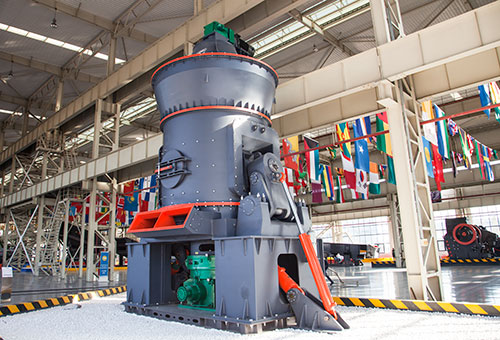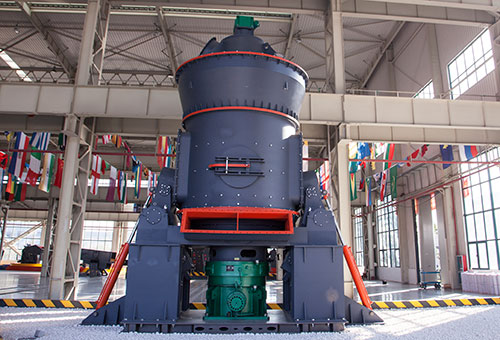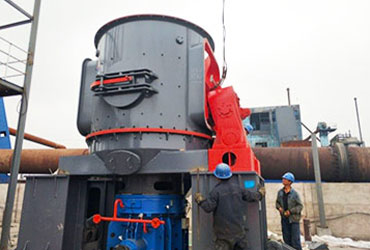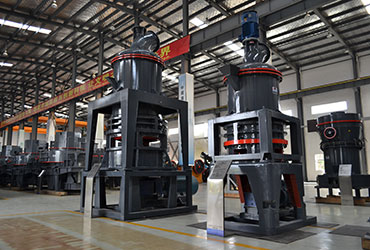-

 The application of LM series Vertical Grinding Mills:
The application of LM series Vertical Grinding Mills:The LM series vertical grinding mills find extensive applications in cement production, power generation, metallurgy, chemical, and non-metallic ore industries. These mills are designed to finely grind lumpy, granular, and powdery materials to meet specific size requirements.
They are specialized for high-volume production of superfine pyrophyllite powder essential in the glass fiber industry, gangue powder crucial for coal-related processes, and various chemical raw material powders crucial in the chemical sector.
The vertical mill stands as an indispensable tool for large-scale mineral powder production in non-metallic mining and various other industries such as cement grinding plants, quartz mining, feldspar, calcite, gypsum, limestone powder processing, dolomite grinding, graphite, fluorite, coal processing, aedelforsite, phosphate ore, and more. It effectively grinds materials with a Mohs hardness under 9.5, showcasing its versatility across a wide array of industries and materials. -
 Features and benefits of LM series Vertical Grinding Mills:
Features and benefits of LM series Vertical Grinding Mills:1. Our mill introduces a new design and structure, employing a medium speed and pressure with a repeated plaiting principle. This unique design allows materials to descend under gravity, evenly wearing all parts of the rollers and ring when dealing with hard substances. Consequently, its capacity remains consistent. This ingenious design prevents damage from unprocessable materials like bolts or pig iron, eliminating the need for cyclones and numerous pipes, resulting in a more compact footprint.
2. Post-grinding by the LM Vertical Mill significantly alters the physical characteristics of materials, enhancing their grindability. Ground materials become irregular multiple units with fractured internal structures, resulting in loose organization and varying final sizes. Subsequent grindings involve primarily grinding rather than crushing, significantly boosting the capacity for subsequent grinds.
3. The LM Vertical Mill exhibits a large crushing ratio and finely adjustable fineness. Large materials undergo grinding by rolling crush between sculptured rollers and plates, forming a material bed. Under spring pressure, rollers flexibly extrude the material bed, achieving desirable fineness. Adjustability extends to producing quantities finer than 100 meshes and materials with larger particle sizes. The maximum final size is below 3mm, facilitating easy secondary grinding.
4. It boasts a long service life for parts prone to wear and requires minimal maintenance. Traditional high-speed grinding equipment tends to force-crush materials directly, causing rapid wear and substantial dust generation. However, this mill's grinding action occurs between plates and rollers, preventing direct wear and significantly reducing material pollution during grinding.
5. Noteworthy characteristics of this vertical grinding mill include excellent mechanical properties, easy handling, convenient maintenance, reduced consumption, lower operational costs, capability to process both wet and dry materials, and a design that facilitates simple installation, resulting in lower base equipment costs and strong environmental protection measures. -
 Working principle of LM series Vertical Grinding Mill:
Working principle of LM series Vertical Grinding Mill:The grinding table in our system is driven by a decelerator connected to the motor. Materials descend through the feed opening at the center of the grinding table while hot air enters from the air inlet simultaneously. Under centrifugal force, these materials move toward the table's edge, where the rollers pulverize them as they pass through the grooves on the table.
Crushed materials are propelled upward by a high-speed airstream created by vanes. Larger particles return to the grinding table for further grinding while passing through the separator atop the mill. Coarse powder descends back to the table for regrinding under the rotating rotor's influence. Meanwhile, fine powder exits with the airstream and is collected by the dust catcher.
Moisture-laden materials are dried as they encounter the hot airstream. By adjusting the airstream's temperature, we can accommodate different material requirements. Additionally, adjusting the separator enables us to achieve the desired fineness of materials, ensuring precise control over the milling process.




 Chat Online
Chat Online